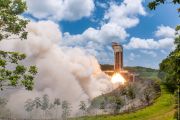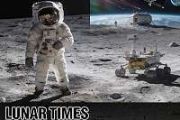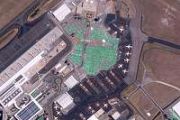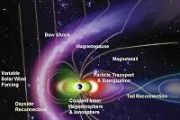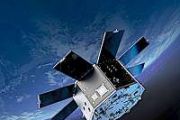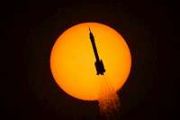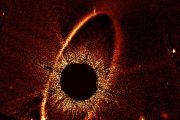
Copernical Team
Siemens launches initiative to support startups with advanced technology
 Siemens has introduced Siemens for Startups, a strategic initiative designed to support early-stage companies in the engineering and manufacturing sectors. Announced at CES 2025 in Las Vegas, this program aims to foster innovation, streamline development, and expedite scaling by offering access to Siemens' software, hardware, and venture-related services at reduced costs.
"Startups are ess
Siemens has introduced Siemens for Startups, a strategic initiative designed to support early-stage companies in the engineering and manufacturing sectors. Announced at CES 2025 in Las Vegas, this program aims to foster innovation, streamline development, and expedite scaling by offering access to Siemens' software, hardware, and venture-related services at reduced costs.
"Startups are ess Nuclear fusion could one day be viable - but major challenges remain
 The way scientists think about fusion changed forever in 2022, when what some called the experiment of the century demonstrated for the first time that fusion can be a viable source of clean energy.
The experiment, at Lawrence Livermore National Laboratory, showed ignition: a fusion reaction generating more energy out than was put in.
In addition, the past few years have been marked
The way scientists think about fusion changed forever in 2022, when what some called the experiment of the century demonstrated for the first time that fusion can be a viable source of clean energy.
The experiment, at Lawrence Livermore National Laboratory, showed ignition: a fusion reaction generating more energy out than was put in.
In addition, the past few years have been marked Toyota invests $44.4M in private Japanese spaceflight company
 The Toyota Motor Corporation will invest $44.4 million in Japan-based Interstellar Technologies to help the private spaceflight firm develop rockets to launch satellites into Earth's orbit.
Toyota Chairman Akio Toyoda on Monday announced the automaker's intent to invest in Interstellar Technologies during the annual Consumer Electronics Show in Las Vegas.
While discussing Toyota's in
The Toyota Motor Corporation will invest $44.4 million in Japan-based Interstellar Technologies to help the private spaceflight firm develop rockets to launch satellites into Earth's orbit.
Toyota Chairman Akio Toyoda on Monday announced the automaker's intent to invest in Interstellar Technologies during the annual Consumer Electronics Show in Las Vegas.
While discussing Toyota's in SpaceX launches 21 Starlinks using 1st-stage on it's 25th mission; launches NRO spysat from Vandenberg
 SpaceX on Friday launched 21 Starlink satellites into low-Earth orbit with a Falcon 9 rocket whose reusable first stage took part in a record 25th mission.
Among the 21 satellites that lifted off from Space Launch Complex 40 at Cape Canaveral Space Force Station in Florida were 13 with direct-to-cell capabilities, SpaceX said.
"The Starlink Direct to Cell constellation now has 40
SpaceX on Friday launched 21 Starlink satellites into low-Earth orbit with a Falcon 9 rocket whose reusable first stage took part in a record 25th mission.
Among the 21 satellites that lifted off from Space Launch Complex 40 at Cape Canaveral Space Force Station in Florida were 13 with direct-to-cell capabilities, SpaceX said.
"The Starlink Direct to Cell constellation now has 40 SpaceX launches new round of spy satellites for NRO
 SpaceX launched new spy satellites into lower Earth orbit for the National Reconnaissance Office, adding to the growing constellation of such U.S.-based intelligence-gathering satellites around the world.
The SpaceX Falcon 9 rocket launched the NROL-153 mission into space late Thursday from the Vandenberg Space Force Base in California with "classified payloads."
"Building on the
SpaceX launched new spy satellites into lower Earth orbit for the National Reconnaissance Office, adding to the growing constellation of such U.S.-based intelligence-gathering satellites around the world.
The SpaceX Falcon 9 rocket launched the NROL-153 mission into space late Thursday from the Vandenberg Space Force Base in California with "classified payloads."
"Building on the SpaceX launches 21 Starlink satellites in 25th mission for 1st-stage booster
 SpaceX on Friday launched 21 Starlink satellites into low-Earth orbit with a Falcon 9 rocket whose reusable first stage took part in a record 25th mission.
Among the 21 satellites that lifted off from Space Launch Complex 40 at Cape Canaveral Space Force Station in Florida were 13 with direct-to-cell capabilities, SpaceX said.
"The Starlink Direct to Cell constellation now has 40
SpaceX on Friday launched 21 Starlink satellites into low-Earth orbit with a Falcon 9 rocket whose reusable first stage took part in a record 25th mission.
Among the 21 satellites that lifted off from Space Launch Complex 40 at Cape Canaveral Space Force Station in Florida were 13 with direct-to-cell capabilities, SpaceX said.
"The Starlink Direct to Cell constellation now has 40 Blue Origin pushes 1st New Glenn rocket launch attempt to early Sunday
This request seems a bit unusual, so we need to confirm that you're human. Please press and hold the button until it turns completely green. Thank you for your cooperation!
Press and hold the button
If you believe this is an error, please contact our support team.
185.132.36.159 : 2a928b6e-827d-45ad-9761-372d36ef
NASA instrument on Firefly's Blue Ghost Lander to study lunar interior
This request seems a bit unusual, so we need to confirm that you're human. Please press and hold the button until it turns completely green. Thank you for your cooperation!
Press and hold the button
If you believe this is an error, please contact our support team.
185.132.36.159 : d793f3d8-ff74-4da8-be59-6721f2f0
Los Angeles struggles to contain wildfires
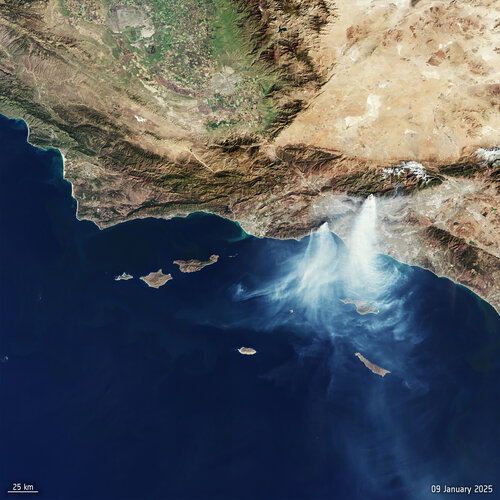 Image:
Five wildfires are still currently burning (as of 10 January) in areas of north Los Angeles. This image, captured by the Copernicus Sentinel-3 mission on 9 January 2025, shows the Palisades and the Eaton fires, with smoke seen reaching Catalina Island and the Santa Barbara reserve.
Image:
Five wildfires are still currently burning (as of 10 January) in areas of north Los Angeles. This image, captured by the Copernicus Sentinel-3 mission on 9 January 2025, shows the Palisades and the Eaton fires, with smoke seen reaching Catalina Island and the Santa Barbara reserve. Week in images: 06-10 January 2025

Week in images: 06-10 January 2025
Discover our week through the lens












